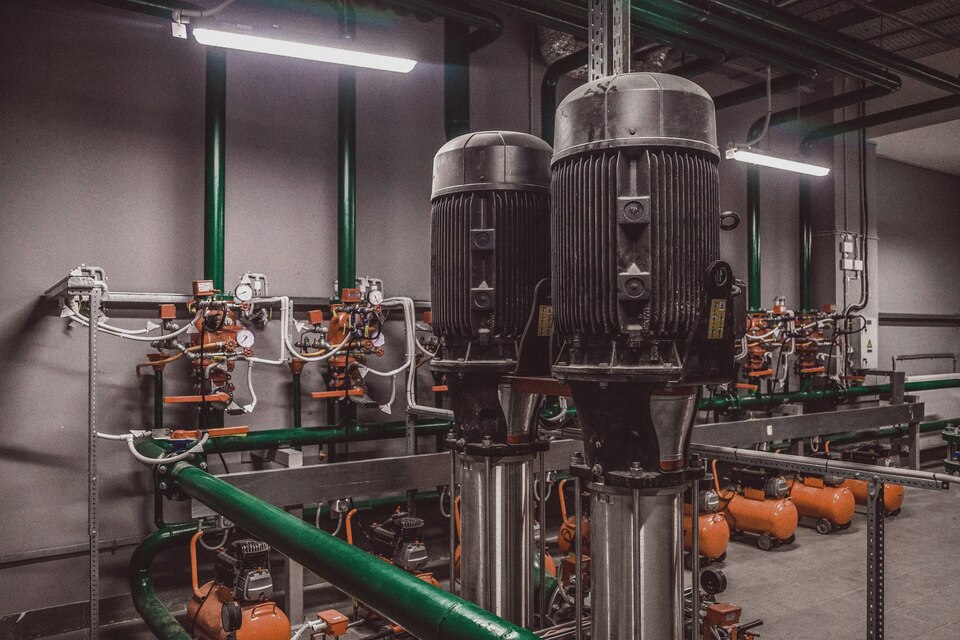In the complicated world of food and beverage processing, where precision and quality are paramount, the unsung heroes that ensure the smooth flow of operations often go unnoticed: pumps. These unassuming mechanical devices play a pivotal role in transferring, mixing, and conveying ingredients throughout the entire production process, from sourcing raw materials to bottling the final product. Yet, with their critical importance comes a pressing concern—the specter of pump failures. Let’s delve into the crucial role pumps play in the food and beverage industry and underscore the imperative of recognizing and mitigating the factors that lead to pump failures.
Types of Pumps Used in Food and Beverage Processing
In the food and beverage industry, the selection of appropriate pumps is paramount to ensure the efficient and hygienic handling of ingredients and products. Here’s an overview of these pumps and their critical roles in various processes:
Centrifugal Pumps:
Centrifugal pumps transmit power from the motor to the impeller to produce flow.
Critical Role: These pumps are commonly employed in the transfer of sensitive fluids such as fruit juices, dairy products and beverages.
Chemical Metering Pumps:
Chemical metering pumps are positive displacement pumps designed for precise and controlled dosing of chemicals or additives into a process stream. They often use pistons to move fluids in fixed volumes.
Critical Role: These pumps provides accurate chemical injection for processes such as sanitization, pH control, flavoring and preservative addition. They are essential for maintaining product consistency, quality and safety.
Diaphragm Pumps:
Diaphragm pumps use a flexible diaphragm to create suction and discharge cycles. This design prevents the fluid from coming into contact with moving parts.Critical Role: These pumps are frequently used for transferring liquid foods, such as sauces, as well as in pharmaceutical-grade processes where contamination must be avoided at all costs.
The Impact of Pump Failures
The Impact of Pump Failures can be far-reaching and detrimental to both production processes and the final product. Here are the consequences of pump failures in this industry:
Production Downtime: One of the immediate and most noticeable impacts of pump failures in food and beverage applications is production downtime. When a pump ceases to function or operates inefficiently, the entire production line often grinds to a halt. Production delays can be costly, causing backlogs, missed delivery deadlines and potential penalties for failing to meet contractual obligations. Downtime disrupts the efficient flow of operations and can result in lost revenue opportunities.
Product Quality Issues: Pump failures can lead to inconsistent flow rates, improper mixing, or contamination due to pump malfunction can compromise the quality and consistency of the final product. Inconsistent product quality can damage a brand’s reputation, erode consumer trust and result in product recalls, which carry significant financial costs.
Hygiene and Safety Concerns: In food and beverage applications, maintaining hygiene and safety standards is of utmost importance. Pump failures can compromise these standards by allowing contaminants or pathogens to enter the product. This poses serious health risks to consumers and can lead to food safety recalls, legal liabilities and damage to a company’s reputation.
Consistency and Customer Satisfaction: Pump failures can disrupt the product consistency, leading to variations in taste, texture and appearance. Dissatisfied customers may switch to competitors, resulting in long-term revenue loss.
Key Factors Contributing to Pump Failures
Material Compatibility: Incompatibility can lead to corrosion, chemical reactions, or degradation of pump components, resulting in failure. For example, corrosive fluids can damage pump casings, seals and impellers if the materials used are not resistant to the specific chemicals in the fluid.
Hygiene and Sanitation: The food and beverage industry places a premium on hygiene and sanitation. Any breach in these areas can result in pump failures and contamination of products. Regular cleaning and maintenance are essential to prevent the buildup of bacteria, mold, or foreign particles that can compromise product safety.
Temperature and Viscosity: Extreme temperatures can affect the viscosity of the fluid, making it harder to pump. So pumps must be selected or designed to handle the range of temperatures and viscosities encountered in a specific application to prevent overheating, cavitation or flow disruptions.
Abrasion and Wear: Abrasive materials or particles in the fluid can cause wear and tear on pump components over time. This abrasion can result in reduced pump efficiency, leakage and eventually failure. Pumps used for handling abrasive substances should be equipped with wear-resistant materials and components to extend their lifespan.
Clogging and Blockages: The presence of solids, debris or sticky substances in the fluid can lead to clogging and blockages within the pump’s passages, valves or impellers. Regular maintenance and proper pump design, including features like screens or filters, can help prevent clogs and blockages that can cause disruptions in the process.
Preventive Measures and Solutions
Material Selection: The materials used in pump components must align with the specific properties of the fluids they handle. For instance, in corrosive environments, choosing materials resistant to corrosion is vital to prevent deterioration. For food and beverage applications, opting for materials such as stainless steel or food-grade elastomers ensures that the integrity and safety of products are maintained.
Routine Maintenance: Routine maintenance involves a structured regimen of inspections, cleaning and servicing to detect and address potential issues before they escalate. A comprehensive maintenance schedule includes tasks such as leak checks, lubrication of moving parts, and inspections of seals and gaskets. Detailed records of maintenance activities help track pump performance and schedule timely replacements or repairs.
Proper Pump Sizing: Oversized or undersized pumps can lead to problems within the system. Conducting a thorough analysis to determine the required flow rate, pressure and other performance parameters specific to the application is the first step. Once these criteria are established, choosing a pump that aligns with them is essential. Factors like head pressure, Net Positive Suction Head (NPSH), and system design must be considered.
Monitoring and Control: Implementing real-time monitoring and control systems enable continuous tracking of pump performance, early issue detection and the ability to make necessary adjustments to prevent failures. Sensors and monitoring devices are installed to measure critical parameters such as pressure, flow rate, temperature and vibration. Alerts and notifications are set up to promptly notify operators when parameters exceed safe thresholds, ensuring the reliability of the pump system. Safeguarding against pump failures is not merely a matter of maintenance but a strategic imperative in industries like food and beverage processing. By focusing on key aspects, companies can proactively minimize the risks associated with pump breakdowns. When it comes to equipping your processes with reliable pump solutions, brands like Iwaki America have consistently demonstrated their commitment to delivering high-quality, industry-specific solutions. Iwaki America’s expertise in providing innovative and durable pump systems aligns perfectly with the preventive strategies. In doing so, they ensure that their processes continue to flow seamlessly, meeting the demands of an ever-evolving industry.


Videos